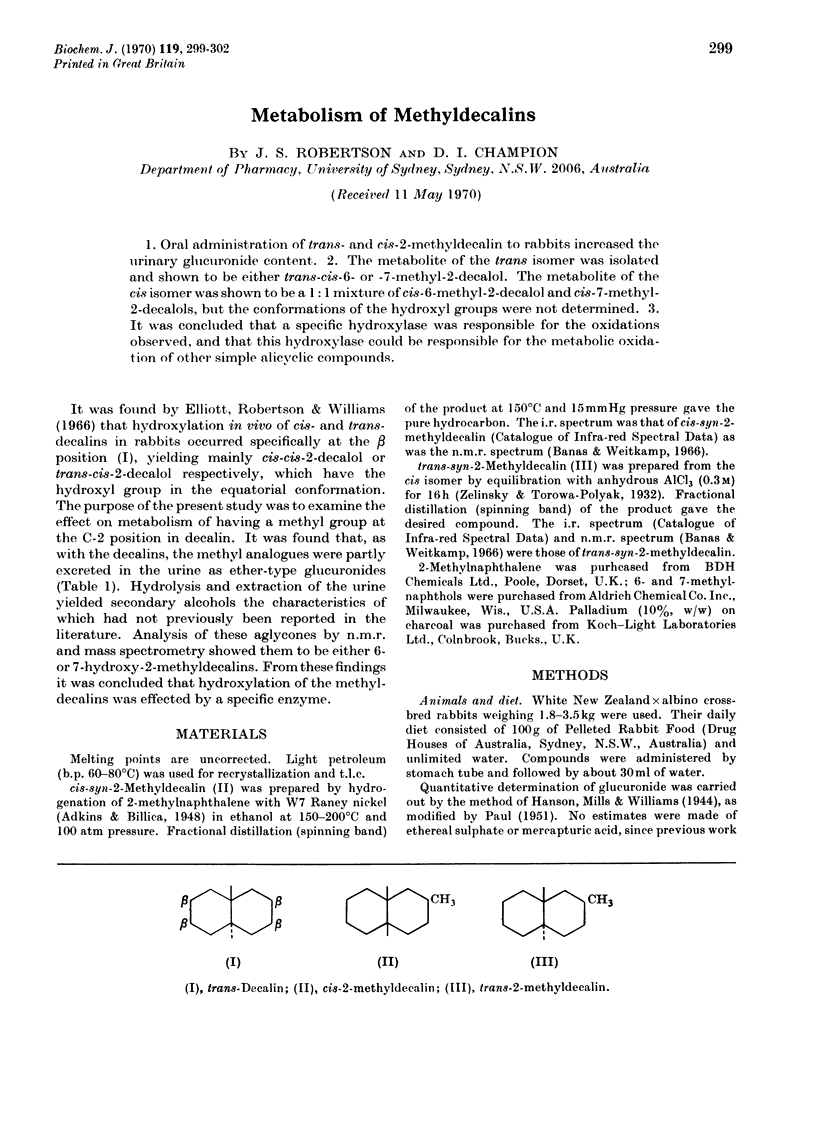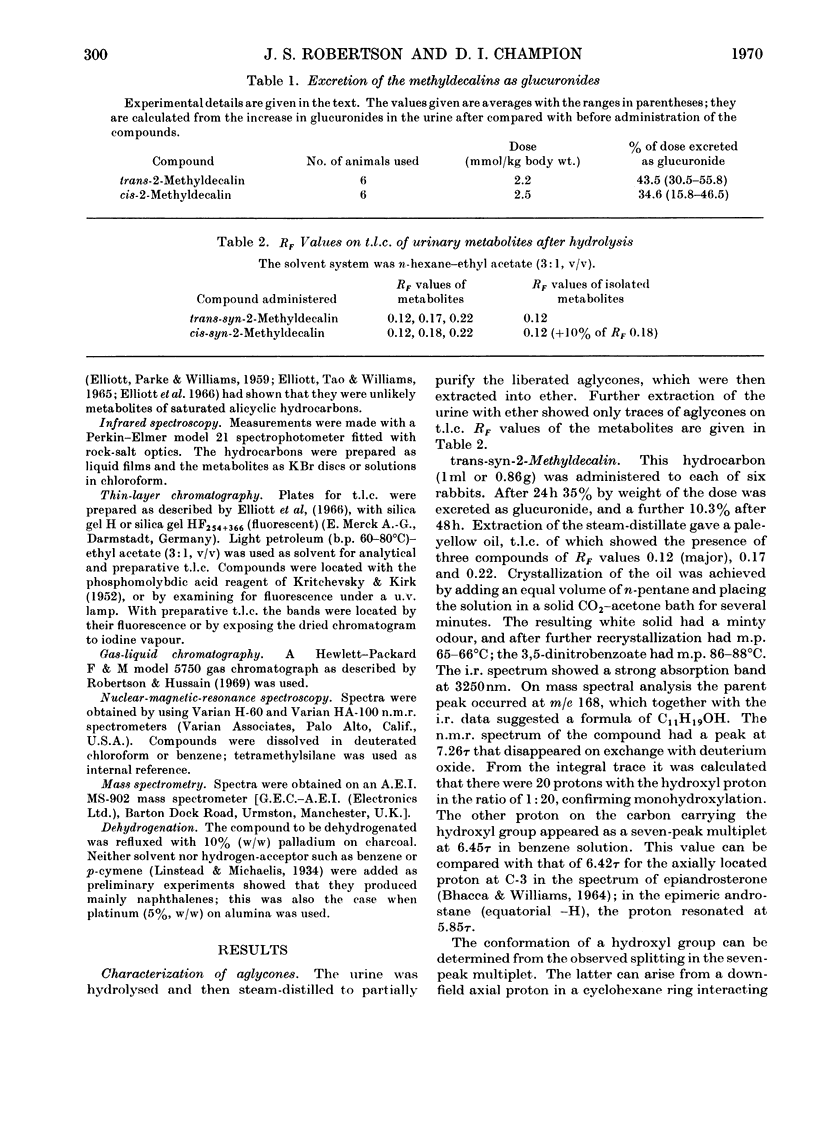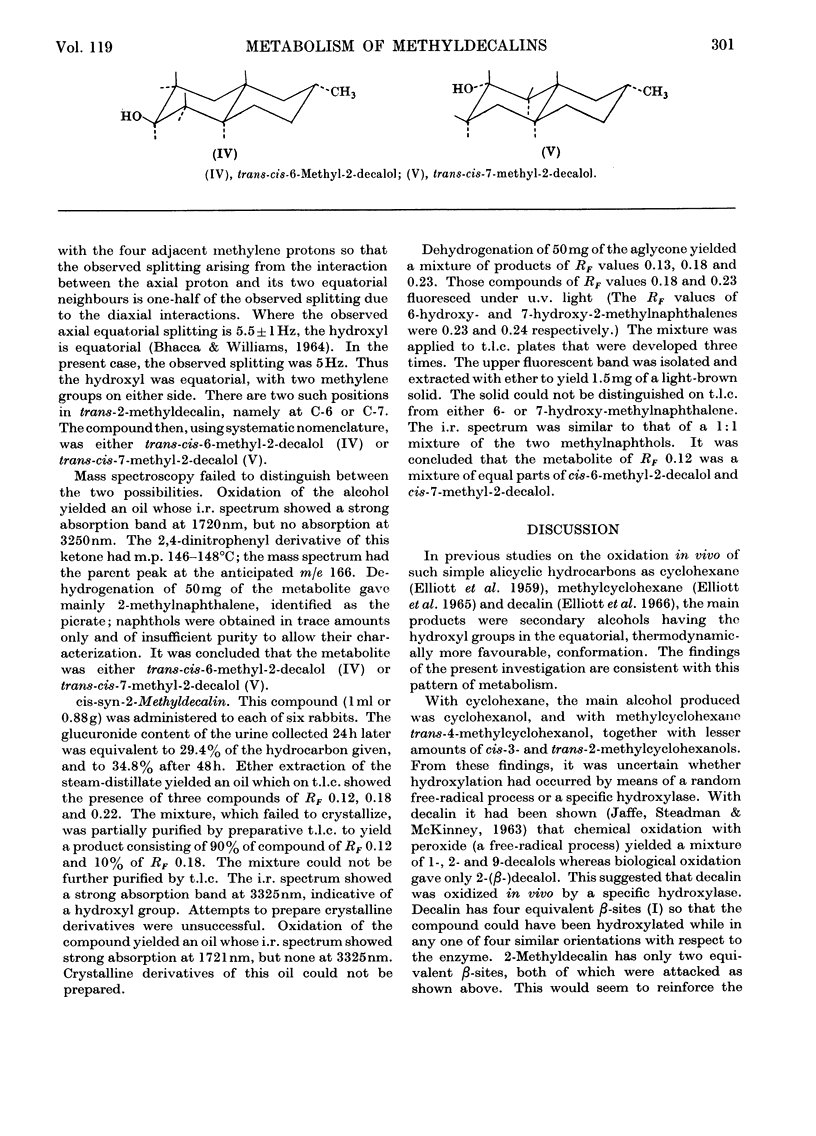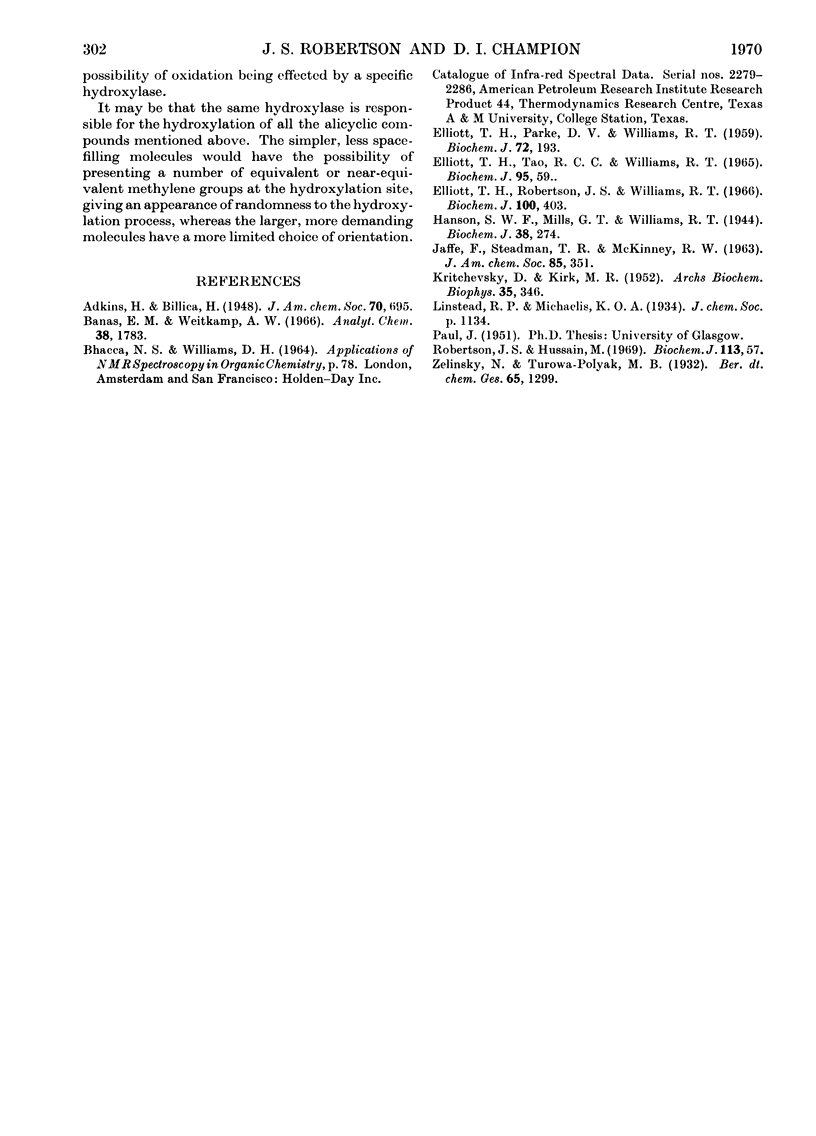Abstract
1. Oral administration of trans- and cis-2-methyldecalin to rabbits increased the urinary glucuronide content. 2. The metabolite of the trans isomer was isolated and shown to be either trans-cis-6- or -7-methyl-2-decalol. The metabolite of the cis isomer was shown to be a 1:1 mixture of cis-6-methyl-2-decalol and cis-7-methyl-2-decalols, but the conformations of the hydroxyl groups were not determined. 3. It was concluded that a specific hydroxylase was responsible for the oxidations observed, and that this hydroxylase could be responsible for the metabolic oxidation of other simple alicyclic compounds.
Full text
PDF



Selected References
These references are in PubMed. This may not be the complete list of references from this article.
- ELLIOTT T. H., PARKE D. V., WILLIAMS R. T. Studies in detoxication. 79. The metabolism of cyclo [14C] hexane and its derivatives. Biochem J. 1959 Jun;72(2):193–200. doi: 10.1042/bj0720193. [DOI] [PMC free article] [PubMed] [Google Scholar]
- Elliott T. H., Robertson J. S., Williams R. T. The metabolism of cis- and trans-decalin. Biochem J. 1966 Aug;100(2):403–406. doi: 10.1042/bj1000403. [DOI] [PMC free article] [PubMed] [Google Scholar]
- Hanson S. W., Mills G. T., Williams R. T. A study of the determination of glucuronic acid by the naphthoresorcinol reaction, with the photoelectric absorptiometer. Biochem J. 1944;38(3):274–279. doi: 10.1042/bj0380274. [DOI] [PMC free article] [PubMed] [Google Scholar]
- KRITCHEVSKY D., KIRK M. R. Detection of steroids in paper chromatography. Arch Biochem Biophys. 1952 Feb;35(2):346–351. doi: 10.1016/s0003-9861(52)80015-3. [DOI] [PubMed] [Google Scholar]


